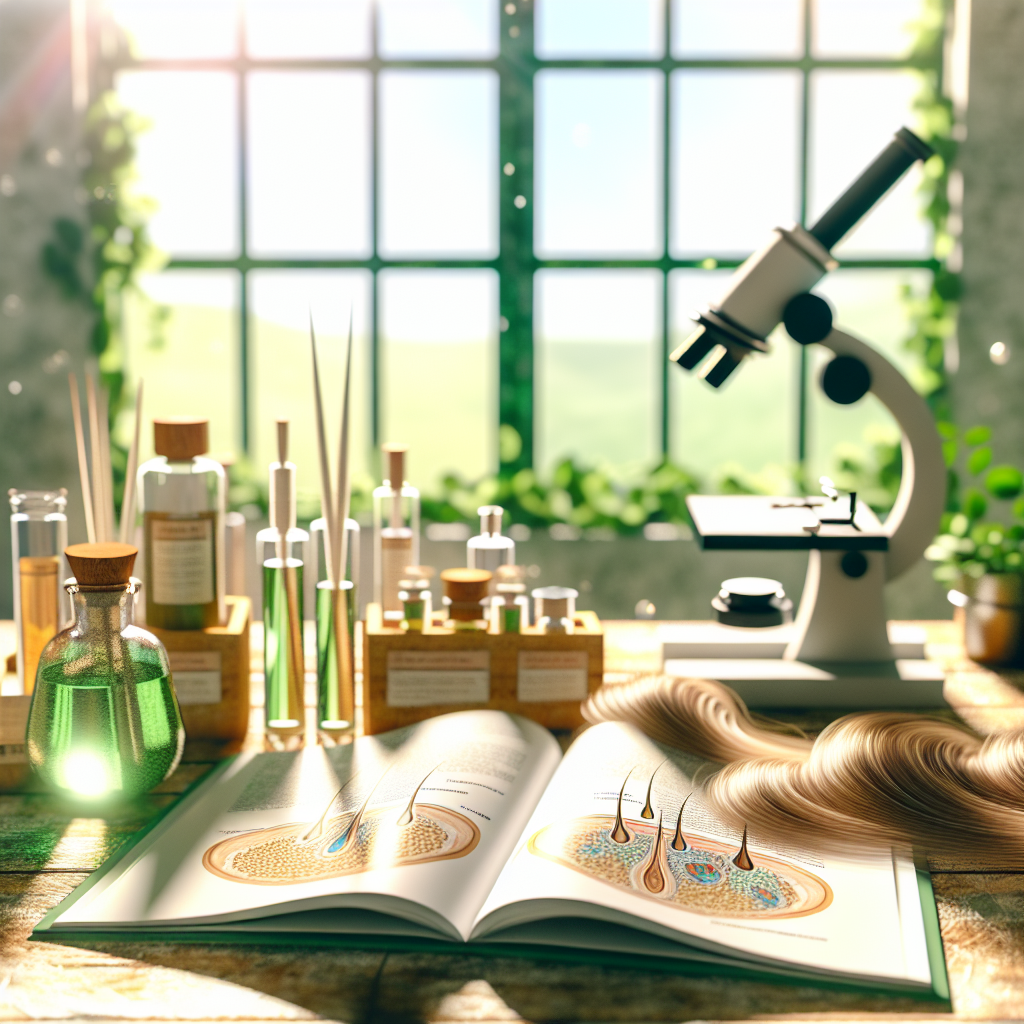
In the quest for healthier, longer hair, people often find themselves navigating a labyrinth of products, promises, and personal anecdotes. Understanding the science behind hair growth becomes a beacon in this journey, guiding us through the myths and truths of maintaining our cherished locks. Hair, after all, is more than just a biological feature; it’s an embodiment of cultural identity and personal style.
The Biology of Hair Growth
At the core of hair growth lies a fascinating biological process anchored in the hair follicle, a dynamic mini-organ that develops before birth. Comprising a series of phases anagen, catagen, and telogen this cycle dictates the growth, rest, and shedding of hair.
Anagen Phase: Known as the growth phase, the anagen stage can last anywhere from 2 to 7 years, depending on genetic predispositions. During this phase, cells in the hair bulb are dividing rapidly, which contributes to the elongation of the hair shaft. Interestingly, according to me, this phase could be seen as the unsung hero of hair growth, as its length dictates just how long our hair can ultimately become.
Catagen Phase: The transition phase, catagen lasts only about 2 to 3 weeks. It is a short-lived period where the hair follicle shrinks and detaches from the dermal papilla, ceasing hair growth.
Telogen Phase: Finally, the resting phase lasts around 3 months. Here, the hair does not grow but remains attached until it eventually falls out as new hair pushes through.
Nutritional Elements in Hair Growth
To unlock the secrets to robust hair growth, one must consider nutrition a pivotal element. Vitamins and minerals act as the building blocks for healthy hair follicles. For instance, biotin, often touted in hair care supplements, plays an essential role in the production of keratin, the primary protein in hair.
Iron and Zinc: These minerals are critical for hair health. Iron improves blood circulation, bringing oxygen to hair follicles, while zinc repairs tissues, ensuring the oil glands around follicles function properly. I recall my grandmother, who religiously included spinach and nuts in her diet, often crediting these foods for her thick mane. Perhaps, she was onto something as science now affirms these nutrients’ importance.
Protein: As hair is made up of protein, ensuring sufficient intake is crucial. People often overlook their protein consumption, focusing instead on trendy hair treatments. A balanced diet rich in lean meats, fish, and legumes can facilitate hair’s structural integrity.
Hormones and Their Influence
Hormones wield significant influence over hair growth, with disruptions potentially leading to hair thinning or loss. Thyroid hormones, androgens, and estrogens are major players in this arena.
Thyroid Disorders: Both hyperthyroidism and hypothyroidism can halt hair growth, causing diffuse hair thinning. Regular thyroid function tests, in my opinion, should be a routine part of health check-ups, especially for those experiencing unexplained hair loss.
Androgens and Estrogens: These sex hormones play differing roles in hair growth. While androgens can lead to conditions like androgenic alopecia, estrogen generally promotes hair growth and lengthens the anagen phase. The hormonal shift during pregnancy, often leading to lush hair, can attest to estrogen’s potent influence.
Stress and Hair Growth
Contemporary life often comes hand-in-hand with stress, a known culprit in affecting hair health. Telogen Effluvium, a stress-related condition, prematurely pushes hair from the growth into the resting phase. Reducing stress through mindfulness, yoga, and adequate sleep can prove beneficial for hair health.
On a personal note, a friend of mine undergoing a particularly stressful period during her exams noticed significant hair shedding. As she gradually embraced stress-reducing practices, her hair health remarkably improved, illustrating the profound connection between mind and body.
Environmental Factors: Hair’s Silent Saboteurs
Pollution, sun exposure, and harsh hair treatments can significantly impact hair health. UV rays compromise the hair shaft’s integrity, leading to brittleness and split ends. Meanwhile, pollutants can adhere to the scalp, blocking follicles and impeding growth.
Protective Measures: Wearing hats, using UV-protectant sprays, and rinsing hair with clean water after swimming in chlorinated pools can mitigate environmental damage. When I discovered the habit of rinsing hair post-swim from a seasoned swimmer, it sounded like just an old wives’ tale. However, this simple act has proven effective in maintaining hair health.
The Role of Genetics
Genetics serve as the blueprint for many aspects of our hair, from color and texture to density and growth potential. While we may not alter our genetic code, understanding its role can help tailor realistic expectations and suitable care routines.
In an unexpected twist, it’s intriguing to note that identical twins often have remarkably similar hair patterns, yet lifestyle differences can lead to noticeable variations. This observation underscores the interplay between genetics and environmental factors.
Unconventional Observations: Challenging Common Notions
An unconventional observation in the realm of hair care suggests that less might actually be more. The obsession with frequent washing and styling, purportedly to maintain cleanliness and style, can strip hair of essential oils. Embracing more natural hair routines, occasional ‘no-shampoo’ days, and minimizing heat styling can foster healthier hair.
Furthermore, prevailing narratives often glorify external products while neglecting internal health’s contribution to hair vitality. In my opinion, the future of hair care lies in a holistic approach one that merges nutritional, emotional, and genetic insights rather than relying solely on topical treatments.
Final Thoughts
The journey to healthier, longer hair is a mosaic of science, history, and personal narratives. While the science behind hair growth provides a foundational understanding, personal experiences and unconventional wisdom contribute layers of depth. As we continue to explore and understand our hair, embracing a holistic approach may be the key to unlocking its true potential.
In the end, the quest for great hair is as much about discovering and understanding oneself as it is about the strands that frame our faces. After all, hair is not merely something we grow it’s something we cultivate.

